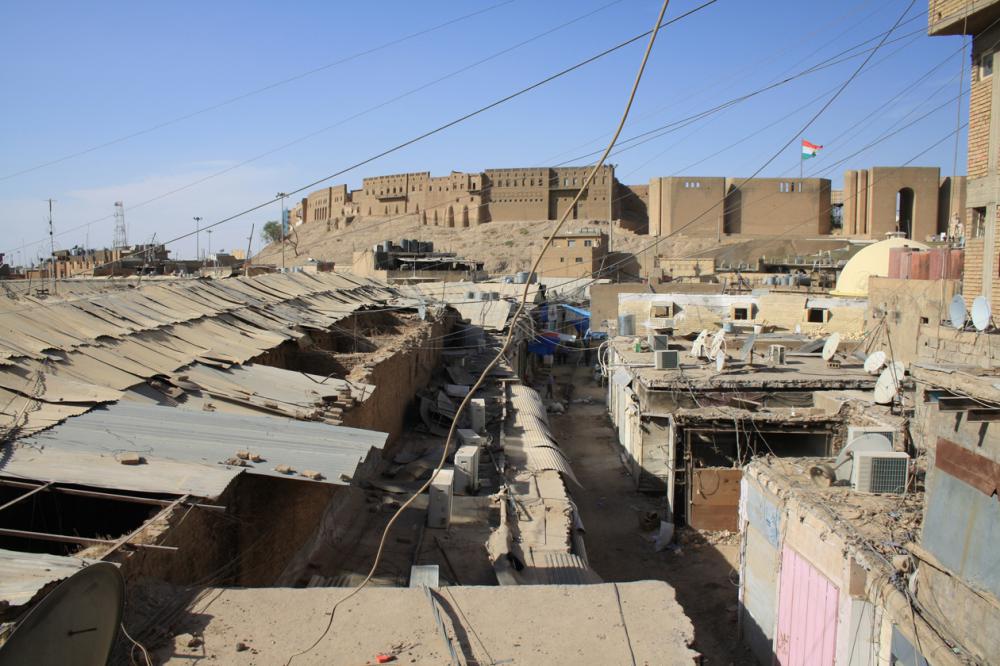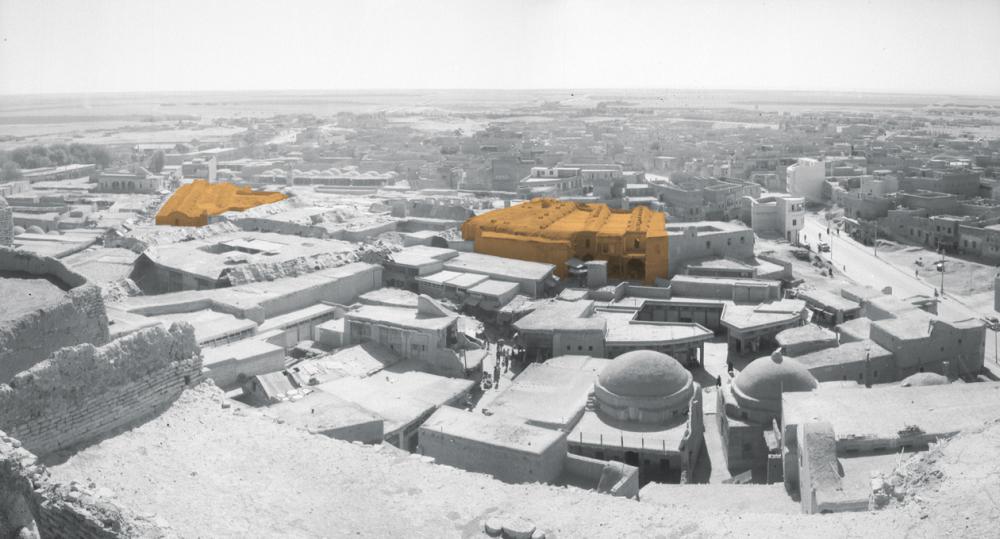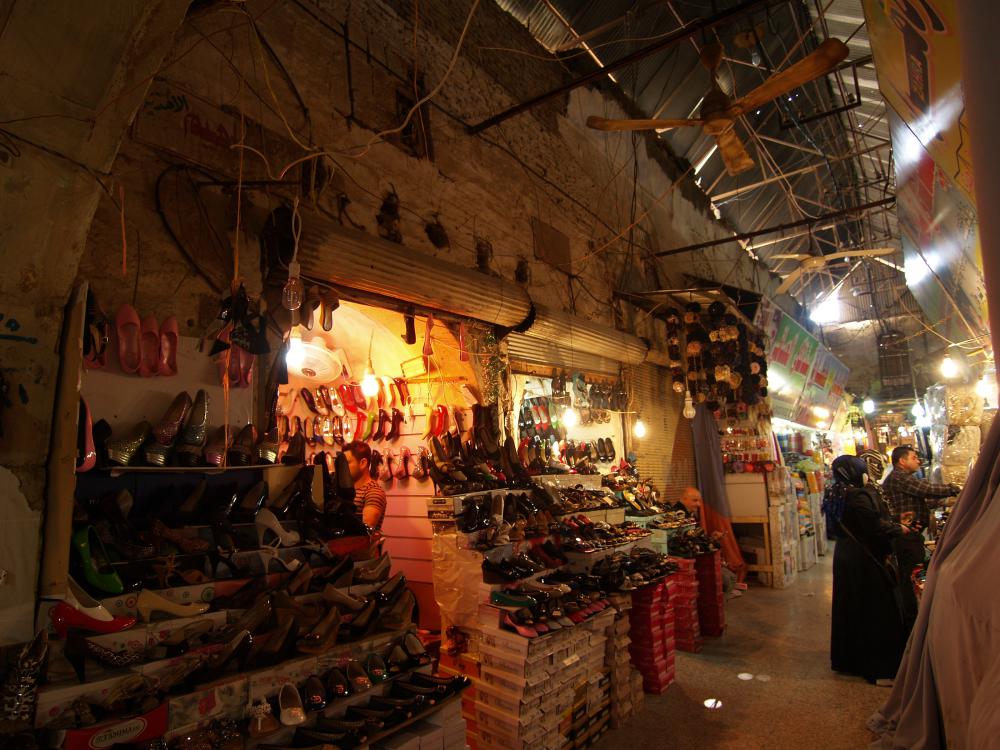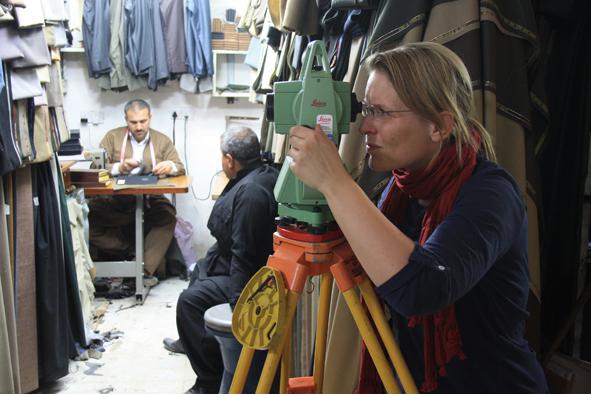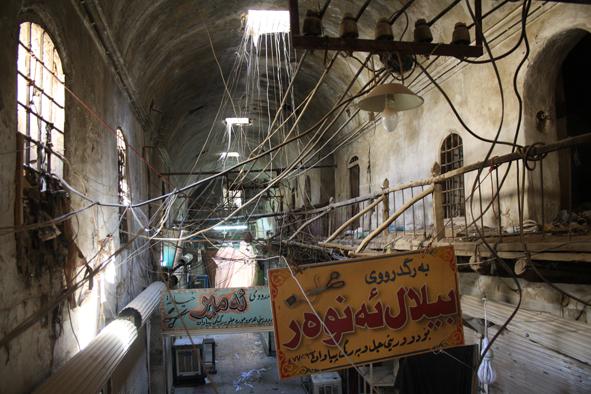The history of the northern Iraqi city of Erbil spans more than five millennia. The citadel hill, a World Cultural Heritage site since 2014, and two historic commercial buildings at the foot of the citadel – the Ottoman Qaisariyas – bear witness to this history.
The landscape of the capital of Kurdistan Province is chiefly dominated by more recent history. A large amount of historical fabric dating from between the 18th and the 20th centuries has been preserved in the area of the citadel, in the traditional residential districts to the immediate south and in the Bazaar. It is under acute threat from the widespread desire for construction and modernisation in the area.
The historical buildings located in the Bazaar area are two Qaisariyas, separate, roofed commercial buildings which were erected in the late 19th century by a family of wealthy long-distance merchants for the sale and storage of high-quality goods.
In their position at the centre of the Bazaar, embedded between the main north-south traffic arteries, they form architectural points of Reference between the urban landmarks of the citadel and the mosque in the southern area of the Bazaar. Within the structural fabric of the Bazaar district the two-storey buildings, closed to the outside, stand out clearly from the surrounding structures with their identical shop units and barrel-vaulted walkways. This self-contained nature of the buildings is currently barely recognisable due to subsequent installations and structural damage. The Qaisariyas have historical significance as a regional form of commercial building. They reflect the importance of Upper Mesopotamia as a place of interaction between Iran, southern Iraq, Anatolia and Syria. Their conservation will help preserve Erbil’s historical identity as part of this heterogeneous region.
In their current state the Qaisariyas are under acute threat. To save the buildings, which are of great historical and architectural importance, a detailed building survey and damage analysis were performed and a restoration plan complying with preservation standards developed as part of a cooperation project run by the Kurdistan Department of Antiquities together with the TU Berlin and the German Archaeological Institute. In addition, conservation and restoration work was carried out on selected pilot sections of both buildings. Restoration of the entire structure in line with the monument preservation concept is to be implemented by the Kurdistan Regional Government.
Project: Dr. Martina Müller-Wiener (TU Berlin), Urban development history, sources; Dr. Anne Mollenhauer (TU Berlin), Architectural history, monument preservation; Dr. Dietmar Kurapkat, (German Archaeological Institute), Building research, monument preservation
Promoted by: Cultural Preservation Programme of The Federal Foreign Office
